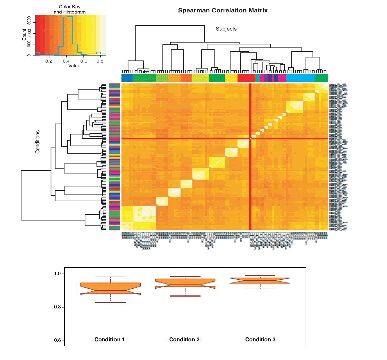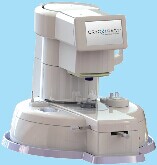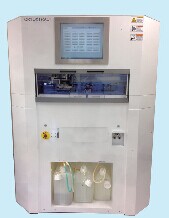Using cryo-packaging technology to improve the efficiency and quality of fecal microbial flora research: Breaking through the problem of handling fecal samples
Author: Graham S. Long, Joseph M. Fraone, and Larry Chin
Summary
At present, the study of intestinal microbial flora has become an increasingly important direction in the field of scientific research. Intestinal microbial flora research has broad application value in the fields of drug research and development, nutrition research, disease prevention and diagnosis, and has great potential. However, in addition to the critical step of logistics, fecal samples face a series of health and safety challenges, and direct access to these samples is often an unwelcome process.
Because stool samples are generally semi-solid and difficult to operate using traditional manual or automated liquid workstations, it is difficult to upgrade small experimental studies to large-scale project-based studies due to limitations in high-throughput operating capabilities.
In response to the difficulties and challenges described above, a new and efficient frozen sample dispensing technology provides a corresponding solution. By keeping the stool sample in a frozen state (temperature controlled at -80 C or lower), the freeze-thaw cycle is eliminated, and the living characteristics of the microbial flora can be well preserved. In addition, frozen sample dispensing provides a safe and consistent method of sample handling. The experimental environment was improved by helping the experimenter easily handle more stool samples by suppressing the generation of unpleasant odors.
There are currently only two instruments available on the market for frozen sample dispensing in the laboratory. A desktop semi-automated instrument that accommodates and handles most of the sample tube specifications available on the market, and is suitable for most sample tube sizes on smaller scale experimental surfaces, suitable for smaller scale pilot studies and Method development work. The other is a floor-standing, fully automated operating platform for standardised process operations and project-based research for large group sample types. Both instruments can process frozen raw stool samples, or frozen suspension-treated fecal samples, and are currently being used in a variety of well-known gut microbiome research laboratories.
introduction
In the current study, the collection and processing of human fecal samples for the analysis of gut microflora faces many challenges, not only in the collection process and the safety of logistics, but also in maintaining the integrity of the molecular profile of the sample in its in vivo state. Sexually, there are many problems that are difficult to solve. Since the degree of solidification, the degree of hydration, and the composition of each excrement sample are very different, it is very difficult to analyze the sample by physical means and by standardizing the sample. And because solid particles can clog the tip, even if the researchers use a stool suspension sample, it is difficult to implement standard liquid automated processing. Despite some difficulties in the accuracy and reproducibility of transferring and processing samples, another more important core issue is how to maintain the integrity of the microbial molecular biology, which is filled with nucleases and RNases. Their presence makes analysis of RNA and metagenomes more difficult.
Maintain the genetic characteristics of living microorganisms by eliminating repeated freeze-thaw operations.
The cryo-sampling technique can be integrated into the genome research workflow to increase research efficiency and maximize sample storage.
The original sample can be resampled to meet the need for cryo-packaging of the sample without repeated freeze-thaw cycles.
In order to keep the nucleic acid content in the stool sample stable, scientists have tried a variety of different methods, including the addition of a complex type of enzyme inhibitor, the addition of 100 mM EDTA in the buffer, a reducing agent and a mixture of ethanol, cryopreserved samples Even the samples were lyophilized.
In response to the above difficulties, we propose a new sample processing method that can ensure the integrity of the sample genetic information and reduce the potential risk of molecular spectrum changes. By sampling the frozen sample, we can keep the sample frozen during the entire process of processing, transfer and storage before the analysis, thus maintaining the molecular integrity of the stool sample. In addition, through cryo-sampling technology, we can truly implement semi-automated/fully automated technology to process more fecal samples, minimizing operator exposure to potentially hazardous materials and further standardizing the workflow. For example, laboratories such as the Nestlé Institute of Health Sciences (EPFL) and the Luxembourg Joint Biological Sample Library (IBBL) have successfully applied semi-automatic desktop cryo-sampling techniques to their gut microbiome research. The French National Institute of Agricultural Research (INRA) has adopted a fully automated technical solution (CXT750 frozen sample sampler) for its large-scale research projects, standardizing and standardizing the sample processing and storage workflow.

Figure 1: The frozen sample sampler is integrated with the French Academy of Agricultural Sciences (INRA) fecal microbial flora research process
 | Figure 2: Comparison of macro-base groups of frozen and sampled frozen stool samples Before the metagenomic analysis, the stool samples of the II volunteers were treated according to the following three conditions. Condition 1: Manually dispensed frozen fecal samples were compared to frozen-packed samples that were fixed, homogeneous, and placed at room temperature for one week: Condition 2: Manually sampled frozen fecal samples were stabilized and evenly sampled Comparison of frozen sampled fecal samples stored at ambient temperature for 1 week: Condition 3: Manually dispensed frozen fecal samples, and frozen repacking from fixed, homogeneous and one week storage at -80 °C Samples are compared. The samples under each condition were sequenced and the data analysis of the metagenomics was performed using Spea rman software to compare and determine the differences in each sampling technique. All conditions show a high score correlation (>0 8). Among them, condition 3 has the best correlation and condition 1 has the worst correlation. |
Introduction to frozen sample sampling technology
The starting point for any gut microbiological research work is to collect fecal samples from patients and volunteers. The collection method will vary depending on the procedure and container. Taking into account the nature, scale and storage requirements of the research project, the sample will be saved in its original state or suspended. The frozen sample sampling technique is capable of handling most types of frozen fecal sample specifications, taking into account the type of collection container and sample preparation after collection. The CXT350 Frozen Sample Sampler specializes in handling most types of sample collection containers, from 2.0 ml small cryotubes to 50ml large centrifuge tubes, which can be quickly set up to fit the current tube size. The CXT750 Frozen Sample Sampler enables fully automated frozen sample processing for analysis of higher throughput environments. If the sample is suspended or normalized at the time of sample collection or immediately after collection, the CXT 750 will be a powerful experimental tool in the implementation of standardized workflows and centralized storage.
In general, frozen fecal samples can be sampled at any time as needed, while the mother sample is kept frozen (for later study). Alternatively, depending on the needs of the pre-planned research project or the need to rebuild/sample the sample, the parent sample can be directly divided into a number of subsamples by frozen sampling for future use.
This method is only used when there is no need to reserve the parent sample.
Whether or not a frozen sampling method is used, the frozen sample can be used directly for most nucleic acid extraction work without repeated freeze-thaw cycles. Researchers at the French Academy of Agricultural Sciences have recently validated the role of this technology in the field of fecal/intestinal microbiology through cryo-sampling techniques (see Figure 1). The French Academy of Agricultural Sciences compared the frozen sampling technique with previous sampling methods to further investigate whether this new technology is suitable for the research project they intend to implement.
in conclusion
A large number of studies have confirmed that there is a complex interrelationship between our gut flora and health and disease, so the importance of gut microbiological research is becoming more and more obvious. As more and more evidence can prove that there is a strong correlation between the morphology of different intestinal microflora and the diagnosis and prognosis, and even the causal relationship, scientists are paying more and more attention to research in this field. . Therefore, research involving the collection and analysis of human fecal samples is increasing and the scale is increasing. Currently, frozen sample sampling techniques are the only viable solution for the effective and safe handling of large quantities of semi-solid or suspended fecal samples in the study of human intestinal microflora.
1 This information and data was provided by Joel Dore, of the French Academy of Agricultural Sciences (INRA) MetaGenoPolis.

Â
â— Semi-automatic sampling and dispensing of frozen samples using disposable needles;
◠Maintaining the original sample and the taken sample in an ultra-low temperature (< -130 °C) frozen state, eliminating the unpleasant (fecal) odor while maximizing the safety of scientific research;
â— Suitable for method development and small-scale research.



It accommodates and handles most of the sample tube specifications on the market and can be customized as needed to maximize flexibility in real-world applications.

Maintain the genetic characteristics of living microorganisms by eliminating repeated freeze-thaw operations.
The cryo-sampling technique can be integrated into the genome research workflow to increase research efficiency and maximize sample storage.

The original sample can be resampled to meet the need for cryo-packaging of the sample without repeated freeze-thaw cycles.

CXT750 frozen sample sampler
â— Sampling and dispensing frozen samples in a fully automated manner.
◠Maintain the original sample and the sample taken out in an ultra-low temperature (-80 ° C) frozen state to maximize the efficiency of scientific research and the safety of the work while eliminating the unpleasant (fecal) odor.
â— Suitable for large group sample research, collection and combination of sample libraries, consolidation and specification rearrangement.



The SBS standard sample tube rack system is compatible with a wide range of sample tube types from 20 rnrl cryotubes to 14 ml 96 matrix sizes, and can be customized to customer needs.
In order to help you fly farther and safer.
Integrating long distance digital control, high definition FPV camera, up to 12 control channels, with more than 10 customs buttons to enhance overall control effectiveness and customisation.
Digital image transsmission
Using LORA technology and redundant algorithms. The image transmission distance up to 20Km is realized on using 2.4GHz frequency and just 100mw transmission power.
Skydroid Remote Control,Skydroid T10 Remote Control,Skydroid H12 Remote Control,Skydroid T12 Remote Control,remote control drone
Dongying Youjia Industry & Trade Co. Ltd. , https://www.uav55.com